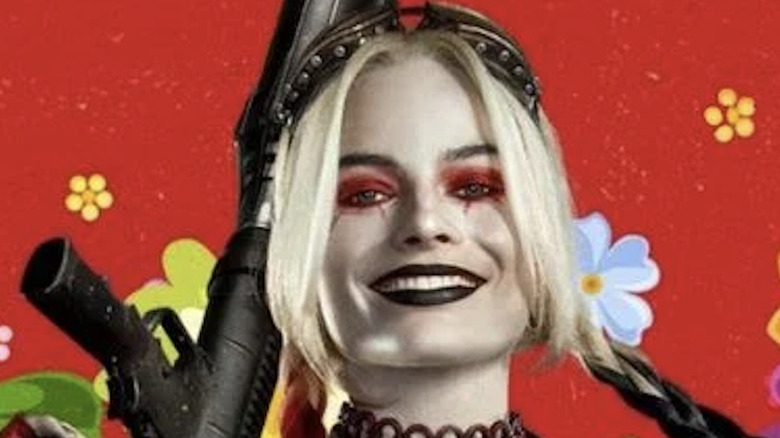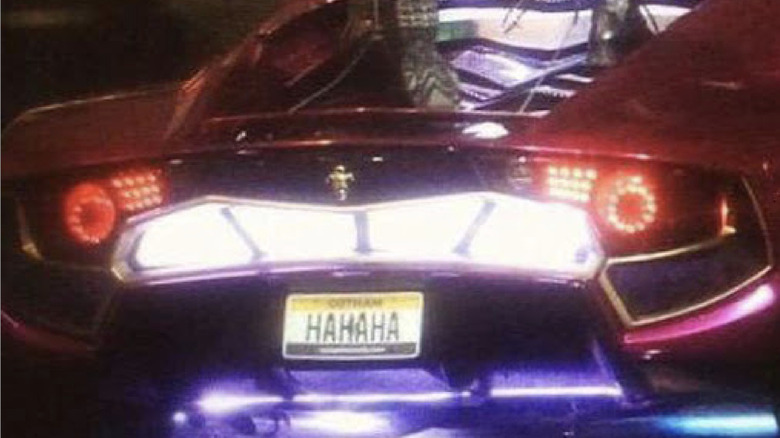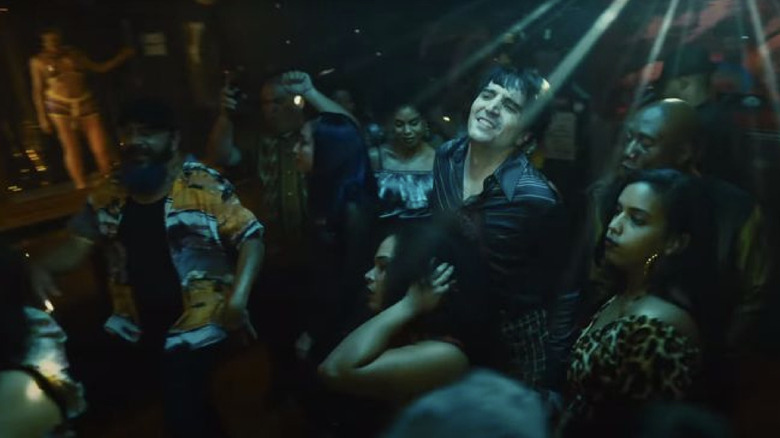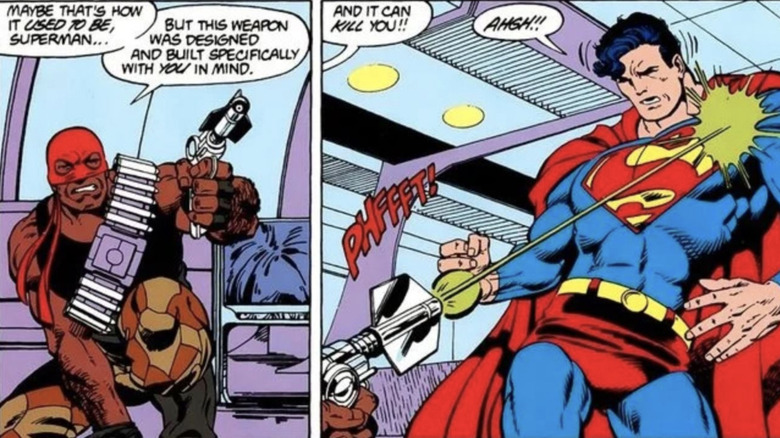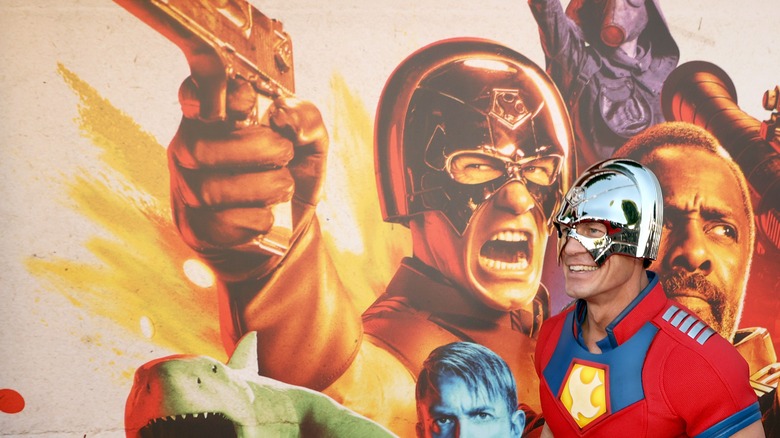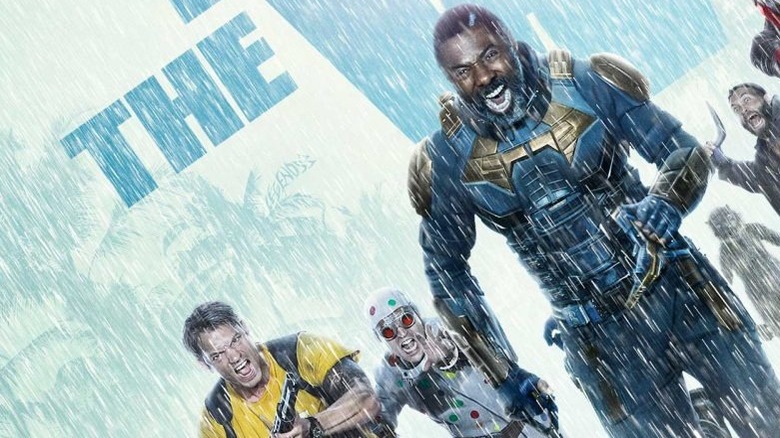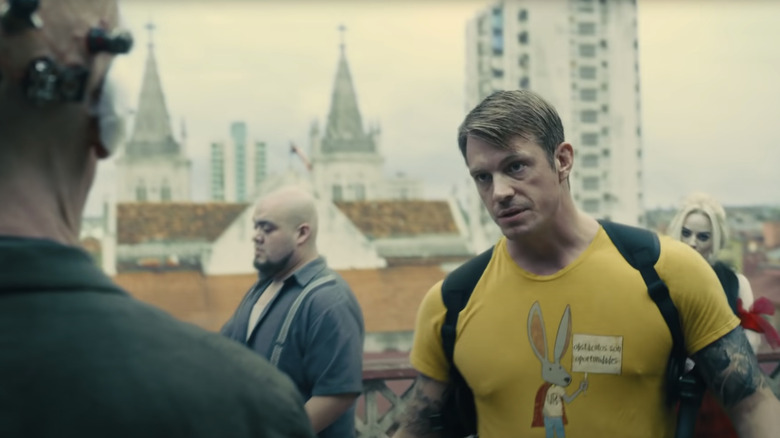Easter Eggs You Missed In The Suicide Squad
Some people wonder why superhero movies are so popular. Others just know — sure, it's the wish fulfillment, sure it's the (usually) clear lines of good and evil and who you should root for, and yes, these films feature the biggest movie stars in the world, but the secret sauce is in the world-building.
Whether you're talking DC or Marvel, each cinematic universe has a nearly bottomless reservoir of characters and storylines to draw from, ones that have been around for decades and were test-marketed generations ago. No Hollywood franchise could hope to compete with the intrinsic advantage comic-book movies already have — in essence, it's their ball to fumble.
This has perhaps never been clearer than with "The Suicide Squad," the near-complete do-over of the 2016 wannabe franchise-starter "Suicide Squad." That previous film garnered huge audience awareness, grossed $746 million worldwide — and was viewed by critics and audiences as a failure. So, like an underperforming sports franchise with a good farm system, DC hired a manager away from the other team (Marvel's "Guardians of the Galaxy" mastermind James Gunn), kept its core players, and promoted a bunch of new prospects.
The star players are back — Margot Robbie as Harley Quinn, Viola Davis as Amanda Waller, Joel Kinnaman as Colonel Flag. Gone are Deadshot, El Diablo, Slipknot, and Enchantress, replaced instead by Bloodsport, Peacemaker, Polka-Dot Man, and King Shark — new rookies, fresh off the bench. To average filmgoers, they are colorful new characters yet to be discovered; to comic book fans, they have intricate backstories spanning decades.
Of course, no one navigates this world better than Gunn, who hand-selected his new "Squad" with all the discerning skill of an artisan cheesemaker balancing acidity and salting bacterium. He has gleefully dropped Easter eggs throughout the entire process, from the movie to the social media to the film's poster. Here are some of the best.
You're so vain
Moments before the battle on Jotunheim, Task Force X briefs the Thinker (Peter Capaldi) on the myriad ways he needs to behave himself, lest they dispatch him with extreme prejudice. During this rooftop scene, criminal/court jester Harley Quinn repeatedly interjects with jokey cautions about things like covering his mouth whenever he coughs.
The Easter egg, however, is buried in a different line: "If we find out you have personalized license plates, you die."
Yes, vanity plates can often be annoying, so the line gets a laugh whether you read something deeper into it or not. But Harley's hatred of vehicle signage is actually a reference to her ex-boyfriend, none other than the Joker. It's also one of the only times in "The Suicide Squad" where they acknowledge the existence of the earlier "Suicide Squad."
In the previous film, Joker was infamously played by Jared Leto. Much like most everything else with the first "Squad," the initial response to his look was massive, promising internet buzz — but the final product was subsequently deemed a disappointment. Symbolic of the Leto Joker's on-the-nose tendencies that made him hard to swallow was his vehicle, an adapted Infiniti G35 dubbed "The Vaydor."
That vehicle also featured ... you guessed it ... vanity plates that read "HAHAHA." Harley has since moved on in the relationship department (as we see with her new beau in this film), but clearly, she still has some things that annoy her when it comes to the ex-puddin'.
In da club
When the team assembles in a charming, local Corto Maltese watering hole to have a few drinks (and buy one for their rat), the club contains several notable faces.
One of the dancers is none other than Pom Klementieff, the distinctive-looking Canadian-born French actor and model who played Mantis in 2017's Gunn-created "Guardians of the Galaxy Vol. 2" as well as MCU spinoffs "Avengers: Infinity War" and "Avengers: Endgame." She doesn't have any lines this time around, but sharp-eyed James Gunn fans know that he has a tight, fun-loving group of friends/collaborators, and it's fun to see her offering support for the filmmaker.
You can also spot the legendary Lloyd Kaufman, mastermind behind the Troma Entertainment indie film factory that has given rise to multiple film talents including Gunn, who in 1995 got his start writing "Tromeo and Juliet." It was at Troma that Gunn learned how to write and produce films, scout locations, work with actors, and make and distribute ads and the finished film. Gunn also worked on such other Troma productions as 1999's "Terror Firmer."
Kaufman can be spotted on the dance floor, clinging to a young woman while dancing alongside Peacemaker (John Cena). Wow, to be a fly on the wall for whatever conversation took place between those two.
Gunn also pays tribute to his former mentor Kaufman with a blink-and-you'll-miss-it clip from Troma's most famous film, the 1984 cult classic "The Toxic Avenger." Next time you watch "The Suicide Squad," see if you can spot it.
Pocket full of Kryptonite
Talk about a line that gets maximum impact with a minimum of dialogue. When Amanda Waller (Viola Davis) introduces Robert DuBois (Idris Elba) by saying "He's in prison for putting Superman in the ICU with a Kryptonite bullet," you immediately know he is not a man to be trifled with. Alas, there is no Superman cameo in "The Suicide Squad," (c'mon, they couldn't have swung by the hospital and brought the big guy some flowers?), but there is a precedent to the whole kryptonite bullet idea.
Ask any five-year-old, and they can tell you the one way to kill Superman: Kryptonite. The fictional material first appeared in the radio serial "The Adventures of Superman" in June of 1943, followed by its first comic book appearance in November 1949's "Superman" #61. The material originates from the hero's home planet, is generally harmless to humans, but could potentially prove lethal for the Man of Steel. Both Batman and Lex Luthor, in most incarnations, are generally known to keep some close — just in case.
The character of Robert DuBois (aka Bloodsport) dates back to 1987's "Superman" vol. 2 #4, and has since become a longtime adversary of Superman. Initially depicted in that post-Rambo time period as a Vietnam veteran, he was brought into the fold by Luthor, who recruited him to assassinate Supes after equipping him with a Punisher-like stash of weapons that included a gun which fired needles filled with kryptonite. This Bloodsport was angry at the citizens of Metropolis, saying they took for granted the freedoms he and his brother (who lost his arms and legs in the war) had fought hard to preserve. After Bloodsport slaughtered dozens of people, Superman intervened — taking a Kryptonite bullet in the process, and requiring medical attention.
Guess Who's Back?
A pair of end credits scenes bring back two members of the Suicide Squad — albeit two characters who could not be any more different, never met in the movie, and would seem to have very different futures in the DC Extended Universe.
First, we see the bizarre, bug-eyed Weasel resurrected. Played on set by James' brother Sean Gunn (who admits: "I licked that glass, just so you know. We have video footage"), who also provided reference points for Rocket Raccoon in the "Guardians" films, the character first appeared in the pages of DC Comics via 1985's "The Fury of Firestorm" #35.
Believe it or not, the John Monroe version of Weasel (which is the version we see in the film) was a Stanford University student, and then a teacher at Vandemeer University. Much like Polka-Dot Man, his presence in comics over the years has generally been as a punchline — both on the page, and for fans in real life — and in those early comics he was a serial killer whose appearance came from a sharp-clawed costume. In the comics, he slashed the throat of the Thinker, causing Rick Flag to kill him. As far as the movie is concerned, Weasel is seen coughing up water and surviving the carnage on the beach — only to scamper away, perhaps headed into town to grab a drink with Lloyd Kaufman and Pom Klementieff.
In the second end credits scene, we see a pair of Waller's newly emboldened minions rushing to the hospital, shocked that someone survived the battle of Jotunheim. You can be forgiven if you have your fingers crossed for Polka-Dot Man, but alas — lying in that hospital bed is Peacemaker. This revelation almost certainly foreshadows the character's resurrection in a Gunn-engineered HBO Max "Peacemaker" series, one the filmmaker recently announced he had completed 8 episodes of filming alongside Cena — referring to the episodes as "Season 1," which seemingly implies there could be a Season 2.
"Peacemaker" is currently slated to debut on the streaming service in January 2022.
The stuff of Legends
Take a close — nope, even closer — look at the poster for "The Suicide Squad," and you'll notice several Easter eggs. One is the raining starfish — an obvious reference to Starro, the big bad, mind-controlling monster Task Force X battles at the end of the film. Another seems to be referring to the beloved DC Comics miniseries that introduced the modern "Suicide Squad" and contained some of their earliest misadventures.
First spotted by the site Comics Beat, the reference can be found masquerading as a palm tree frond just under the word "The" in the poster tagline: "They're dying to save the world." Look super close, and you'll see it: The word "Legends."
Most likely, this Easter egg refers to the warmly-remembered, six-issue Legends comic series DC released in 1986 and 1987. The comics featured new takes on the Flash, Justice League, and Captain Marvel, but perhaps most significantly introduced the Suicide Squad in issue #3.
The series had DC heroes battling Darkseid, and the third issue had Amanda Waller organizing a Black Ops team to take on Glorious Godfrey — one of Darkseid's elite and a New God of Apokolips. She selected Rick Flag, Bronze Tiger, Deadshot, Enchantress, and Captain Boomerang for the mission — many of whom are also featured in Gunn's film and/or appeared in David Ayer's previous "Suicide" mission.
Comics fans love to see a tip of the cap to those who came before, and this minor acknowledgement of John Ostrander, Len Wein, John Byrne, Karl Kesel, and others who helped build the modern "Squad" is a nice touch. Gunn is undoubtedly one of the most comic book-savvy super fans working in Hollywood today, and this seems to be an acknowledgement that the publishing of "Legends" (which would have come out when he was about 20 years old) was a formative experience.
Look, it's Milton!
His demise might just get the biggest laugh in "The Suicide Squad," an impressive feat in a movie filled with punchlines as potent as Bloodsport's weaponry. Emerging quietly in the background of the story, a seemingly insignificant van-driving character goes from chauffeur to tag-along to full-fledged martyr, inspiring the Squad to take down Jotunheim and ultimately rebel against Waller and her program.
His name is Milton, and he first gained the attention of many sharp-eyed moviegoers when he could be glimpsed in the background of the rooftop scene, strutting around like he was another super-powered member of the Suicide Squad. When a fan posted a screengrab and asked in March of 2021 "Who is this dude?????" the Twitter-savvy filmmaker simply replied: "Oh, that? That's Milton."
Comic fans immediately leapt into action, speculating that he could be the sideshow character Milton Fine (aka the Amazing Brainiac), or perhaps a gender-swapped version of the female Amazon warrior Hippolyta Milton, which could lead to a crossover with Wonder Woman, which could mean the Justice League and the Suicide Squad will finally ...
Nope. That's just Milton.
The stone-faced, ill-fated driver is played by Julio Ruiz, an actor who has appeared on "Vice Principals," "Preacher" and "S.W.A.T." If you want to see something adorable, check out this March 2021 article from Ruiz's hometown newspaper — which proudly hypes up the fact that he's appearing alongside Margot Robbie, Idris Elba, and other Hollywood stars in a summer tentpole superhero film, but clearly has no idea why.
Now that we've seen the movie, information seems almost harder to come by. Milton's barely acknowledged death triggers Harley Quinn, as does the acknowledgement of the others that they hardly realized he wasn't waiting in the van. Like the death of Javelin, it emboldens her to make triumph from tragedy and avenge her fallen comrades.
Are there any grander implications to this storyline in the DCEU? Can we look forward to a Batman/Milton team-up movie in the near future? Probably not, but you can follow Julio Ruiz on Twitter for more information on the mysterious Milton — and where his story goes from here.
